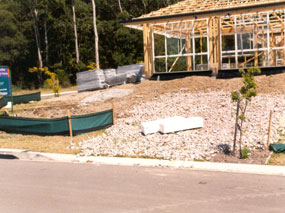Appendix B - Sediment Basin Design and Operation

 Queensland Govt.jpg)
APPENDIX B – REVISION JUNE 2018
This revision of Appendix B of IECA (2008) is the finalised version of the draft release in December 2016 following industry consultation.
IECA acknowledges the financial support provided by the Queensland Government to deliver this update of Appendix B of the 2008 Best Practice Erosion and Sediment control document.
What Are the Major Changes from the ORIGINAL (2008) version?
We have revised Appendix B to include the use of Type A and Type B basins for fine-grained or dispersive soils where assisted settling of sediment occurs as runoff passes through the basin rather than the capture-treat-release approach adopted by Type D/F basins. The concept of continuous flow basins has been adapted from New Zealand. The following provides a brief description:
- Type A – similar to those originally developed in Auckland (under TP-90 guidelines). Type A basins include an automated chemical dosing system and a decant structure at the outlet;
- Type B – incorporate an automated chemical dosing system but no decants. These can be used for catchments with shorter disturbance timeframes.
What Are the Major Changes from the DRAFT (2016) version?
The major changes from the draft release and this final release are:
- Inclusion of symbols and abbreviations.
- Modifying the sizing of Type A basins based on Jar testing rather than a nominated particle size.
- New Technical Notes to help designers determine the depth of the sediment storage zone (DSS) based on DS, VS, m.
- Changing the minimum free water zone depth to solely 0.2 m (remove the 10%VS requirement).
- More description of the purpose of Type B basins.
- Changes to the Technical Notes on the possible retention of water in Type A and Type B basins.
Why the Change?
Continuous flow sediment basins have been in use in New Zealand since the 1990s with great success. A major constraint on performance for Type D/F basins (capture-treat-release approach) is the basins overtopping during larger storm events and during consecutive rainfall events prior to treating and releasing. Type A and B basins will allow for treatment during both of these scenarios producing higher treatment efficiency and improved environmental outcomes.


.jpg)